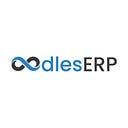Getting Familiar With The Concept of Web 3.0
An Introduction To Web 3.0
The next phase of the internet’s development, known as Web 3.0, is named after its emphasis on building a more sophisticated and semantic web. Furthermore, Web 3.0 is frequently linked to the decentralisation of the internet, which would give people more ownership and control over their personal data. It’s crucial to remember that there are differing definitions for the term “Web 3.0” and that the idea is still in its infancy.
How Is Web 3.0 different from Web 2.0?
The term “Semantic Web,” which describes a vision of the internet where data and information are more connected and machine-understandable, is frequently used to describe Web 3.0. In contrast, unstructured and disjointed data makes up the majority of the web as it exists today (Web 2.0). The ability for users to have more control over their personal data, the use of blockchain technology for safe and decentralised data storage, and the application of artificial intelligence and machine learning to extract meaning from data are some of the key components of Web 3.0. Web 3.0 is also anticipated to be more intuitive and interactive, giving users a more seamless and customised experience.
Also, Read Synergizing ERP and Blockchain To Revolutionize The Manufacturing Industry
Can We Use Web 3.0 to Create Web Applications?
It is possible to create web applications with Web 3.0 technologies. The next generation of the World Wide Web, referred to as Web 3.0 or the “Semantic Web,” is characterised by more interconnected data and machine comprehension and interpretation of data meaning. This makes it possible to create new kinds of web applications, like machine learning, natural language processing, and knowledge representation, that are capable of understanding and processing data in a more complex way. Smart contracts, decentralised networks, and blockchain are a few instances of Web 3.0 technologies. On a blockchain network, these technologies are being utilised to create decentralised applications, or dApps.
Can We Implement Web 3.0 With Java?
In your Java application, you can work with RDF, OWL, and SPARQL by utilising Java libraries like Jena, Sesame, or OWLAPI. These libraries offer RDF and OWL data parsing, manipulation, and querying APIs as well as SPARQL endpoint interaction.
Additionally, you can develop your web application using frameworks like Spring or Play Framework and use these libraries to integrate your RDF and OWL data into the application.
Finally, to create decentralised applications and interact with the Ethereum blockchain, you can use the web3j Java implementation of Ethereum’s smart contract platform to create decentralised web3.0 implementations.
To learn more about our enterprise web app development services, write to us at erp@oodles.io.
